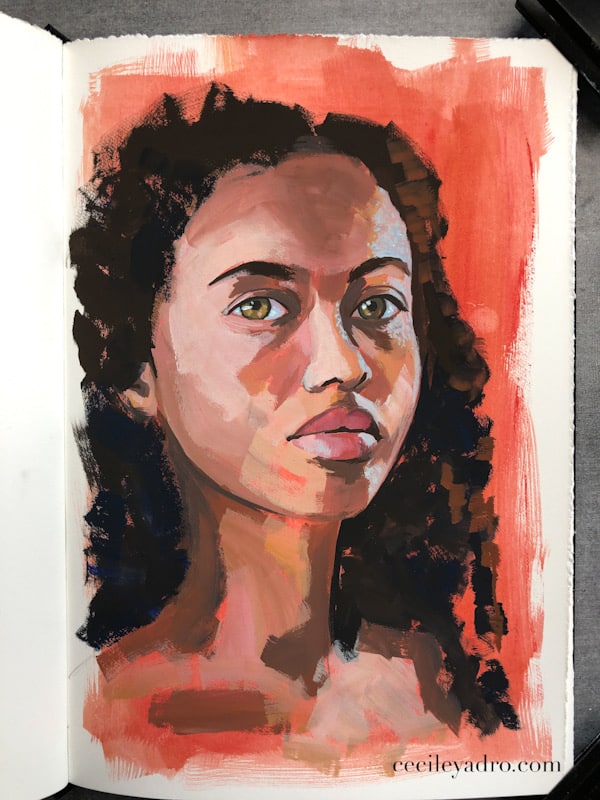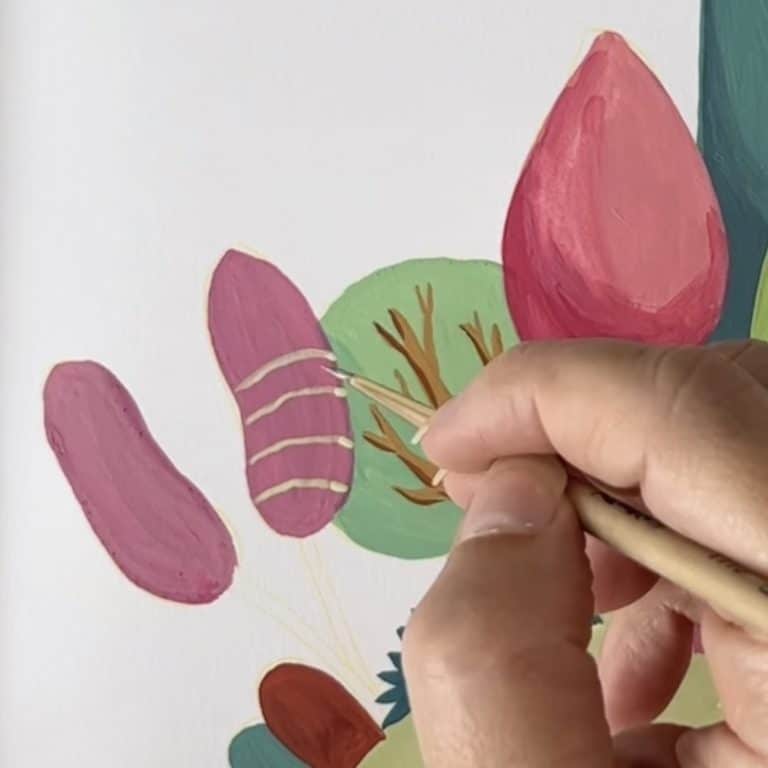How to layer gouache paint?
Do you have trouble layering gouache? Do you get muddy colors when you apply layers of gouache? Gouache is an excellent medium but comes with some difficulties, and layering is one of them. Gouache can be difficult to layer because it tends to mix together instead of layering on top of each other.
Here are six tips for painting a successful gouache layering.
Limit the number of brushstrokes
The first thing to consider is how you will lay down the color. The idea is to limit the number of brushstrokes in your painting. If you have a lot of brushstrokes, you will get muddy colors. The more layers, the dirtier it will look. If you’re painting a landscape, try to limit your brushstrokes to one or two layers of color. One layer is sufficient if you’re painting an object, like a flower or fruit.
Try to apply the paint with a single brushstroke without rubbing or going back on top of it. This will help create even coverage without “grabbing” too much pigment from the previous layer and causing an uneven texture in your work.
Increase the layer’s consistency.
You need to work from thin to thick to get the correct consistency. You want the first layer to be very liquid, like watercolor. The second layer should be slightly thicker than the first but still liquid. The third layer should be slightly thicker again and so on until you get to the final layer. This will help keep your colors separate when they dry.

If you begin with a first layer that is too thick, you won’t be able to add more layers on top of it without lifting the colors below. This is where you get the muddy colors when you lift the pigments below. Gouache has an exceptional property when applied in layers, each layer will stick to the previous one, and the pigments will merge. You can use this to your advantage if you apply the following tip:
Wait for the previous layer to dry.
The next step is to wait for the previous layer to dry. The first time I tried gouache, I did not wait long enough, and my colors got muddy. The paint tends to blend a bit when overlapped too soon, so make sure you give each layer plenty of time on its own before applying another color over it. The longer you wait, the better; depending on the weather, a couple of minutes are enough.
If you are painting a delicate subject, it is best to give each layer time to dry completely before adding another color. If you are painting a flower with many petals, allow each layer of color on its own before applying another one. This will ensure that your paint does not smear when the next layer is placed over it.
Use a dry brush for texture.
Layering gouache is not always to change the colors; it can also add texture. When the previous layer is dry, use a very dry brush. Dab in the paint, remove the excess paint on a cloth or rag and rub very gently on the paint to achieve a textured surface. This is great to add dimension and shadows.

Check the opacity of the pigments.
Gouache is a transparent water-soluble medium composed of pigment and gum arabic. It dries to a matte finish and can be used to create layers of color. The pigments used in gouache are opaque, so it’s possible to cover up an underlying layer of color with another color of gouache.
But not all pigments are opaque! You have to check the opacity symbol on the tube to know how opaque it is: transparent, semi-transparent, opaque. If you want to cover a dark color with a light one, use an intermediate layer of opaque white, let it dry, and apply the desired color.

Don’t layer too many coats.
Gouache is thick and opaque, so it can be tempting to keep applying more and more layers of color until you’re happy with the effect. But don’t do this! The paint will build up on your brush, creating an uneven application that will be hard to smooth. It’s also important to note that there’s a point at which the gouache becomes so thick that it won’t dry properly or even looks oily. I’d say that four layers are the maximum you can apply.
Conclusion
The main takeaway from this article is that when appropriately used, gouache can create many beautiful effects. It can be an excellent tool for artists experimenting with different mediums and techniques. This article is not intended to be an exhaustive guide to all things gouache but rather a starting point for your exploration of this versatile medium.
You can also watch the video ‘How to layer gouache paint’:









